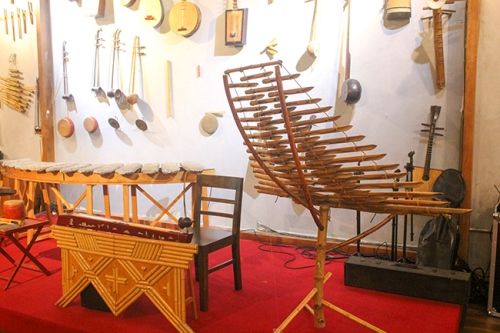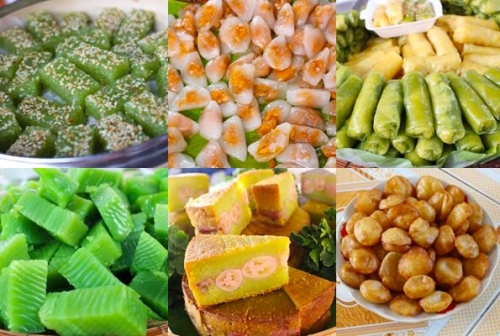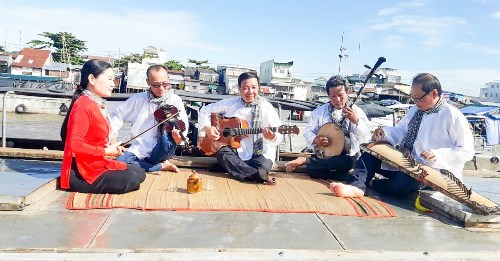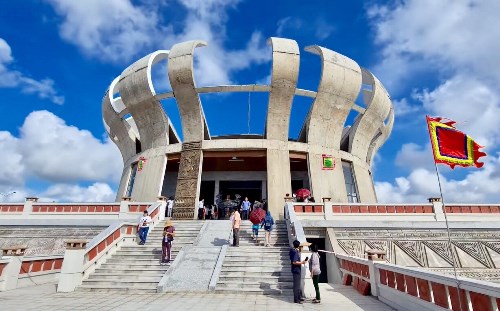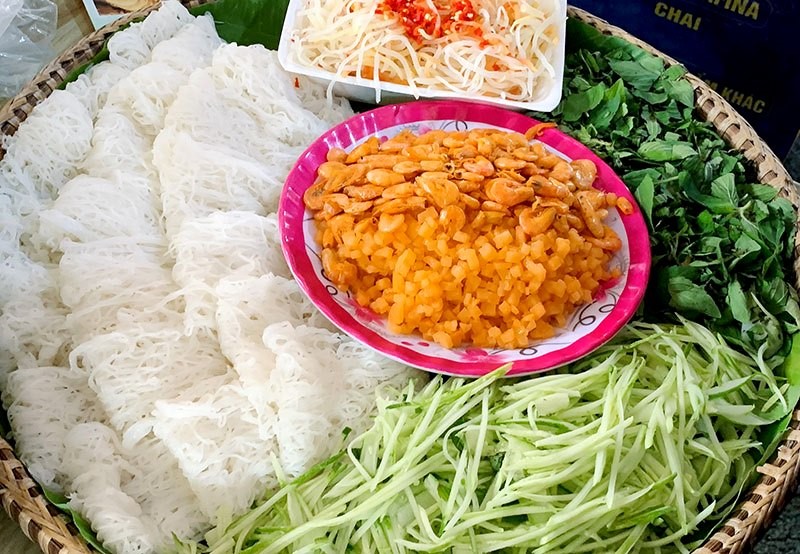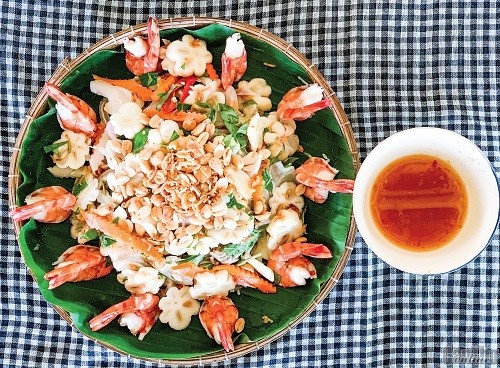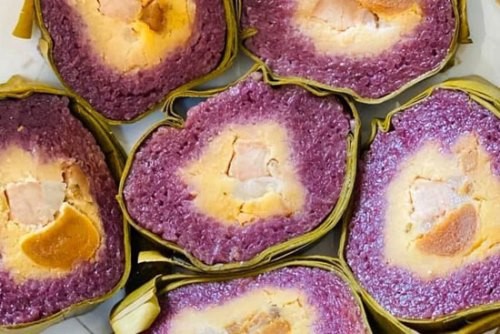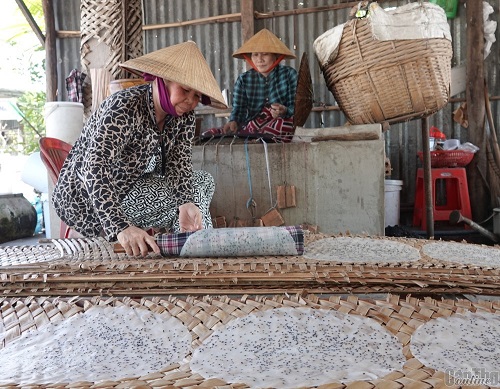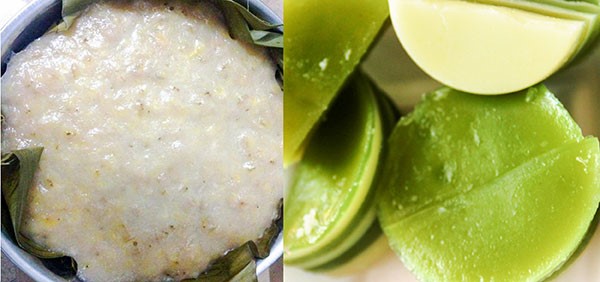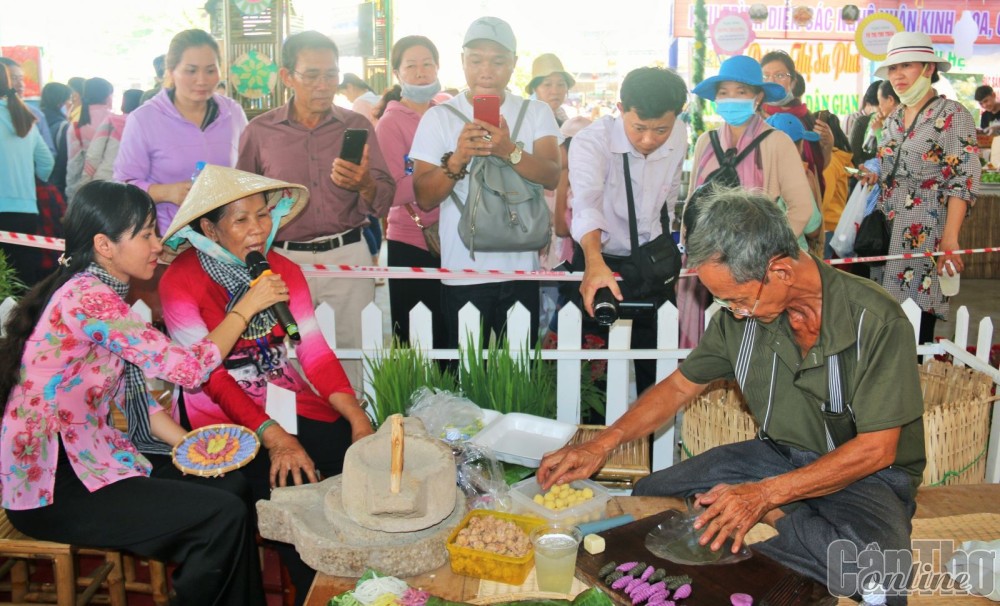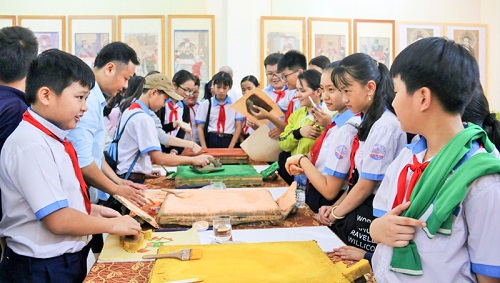
At weekend, many students come to Can Tho Museum for folk paintings and engage in printing activity as instructed by the narrators. The fragrant paper sheets, old ink colors and printing mold have created unique yet familiar folk paintings in many people's minds. Many youngster expressed surprise and delight in printing pictures by themselves when first approaching this art form.
According to the Vietnam Fine Arts Museum, Vietnamese folk paintings are handed down in cities, villages and towns. Today, many handicraft villages that enrich the spiritual life of Vietnamese people in modern life are still being preserved and promoted. This exhibition displays 64 typical works in the collection of Vietnam Fine Arts Museum, coming from famous lines of folk paintings such as Dong Ho (Bac Ninh), Hang Trong and Kim Hoang (Hanoi) as well as some worship paintings like Doc Loi (Nghe An), Vu Di (Vinh Phuc), etc.
|
Risk of being forgotten At present, many folk paintings are at risk of being forgotten. Dong Ho painting has only a few families following this trade. As for Hang Trong Painting, there is only one family to preserve this old craft for the whole street. After a long time of being forgotten, Kim Hoang painting is being restored by a group of enthusiastic collectors. The worship paintings of several Northern ethnic minorities are at high risk of being consigned to oblivion. Therefore, exhibitions like “Vietnamese folk paintings” at Can Tho Museum are really meaningful in promoting and preserving old art culture. |
Look at each of the old but delicate works, colors and lines of fine art, showing the talent of the old artisans. From that point of view, each painting line has a very specific expression and the content is also very rich. The most prominent is the depiction of the living and working life of farmers such as "Chợ quê" (Countryside market), "Người nông dân với con trâu" (Farmer with water buffalo) and "Tố nữ" (Virgin girl), etc. These paintings all belong to Hang Trong painting. Moreover, topics of congratulating meanings and good luck wishes like "Dai cat" (great fortune) - "Nghinh Xuan" (welcome the spring), "Vinh hoa" - "Phu Quy" (honour - prosperity) belong to Dong Ho painting. And there is also a line of painting that is very special with spiritual meaning, bearing many philosophies: "Quan Am thuyet phap" (Guanyin preaching a sermon) (Doc loi painting, Nghe An), "Thap dien Diem Vuong" (Ten kings of hell) (Vu Di painting, Vinh Phuc) and so on. Whatever the subject, the paintings still have the ultimate meaning to express the desire for a good and peaceful life.
According to the Vietnam Fine Arts Museum, folk paintings including Tet paintings and worship paintings have appeared for a long time. Right from the Mac dynasty - in the sixteenth century, folk paintings became popular and appeared in many families of the Northern Vietnam on Tet holiday, with the aim of decorating houses and exorcising or wishing for happiness. Through historical periods, until the XVII and XIX century, folk paintings had stable content as well as solid form and continued to develop highly until the early and mid-twentieth century.
Folk paintings are made in many localities throughout the country. However, based on each place, the contents, techniques, nuances and materials to identify such painting lines like Dong Ho (Bac Ninh), Hang Trong (Ha Noi), Kim Hoang (former Ha Tay province, now part of Hanoi), Sinh Village (Thua Thien Hue), etc. In addition, the Vietnam Fine Arts Museum also meticulously collects a large number of ancient worship painting samples created in XVII - XIX century in Doc Loi temple (Nghe An), Vu Di commune (Vinh Phuc) and in some northern mountainous provinces.
Traditional folk paintings exhibition in Can Tho helps its people better understand a trait of ancient and unique culture, contributing to enriching Vietnamese cultural identity.
Can Tho Newspaper - Translated by Hoang Dat





